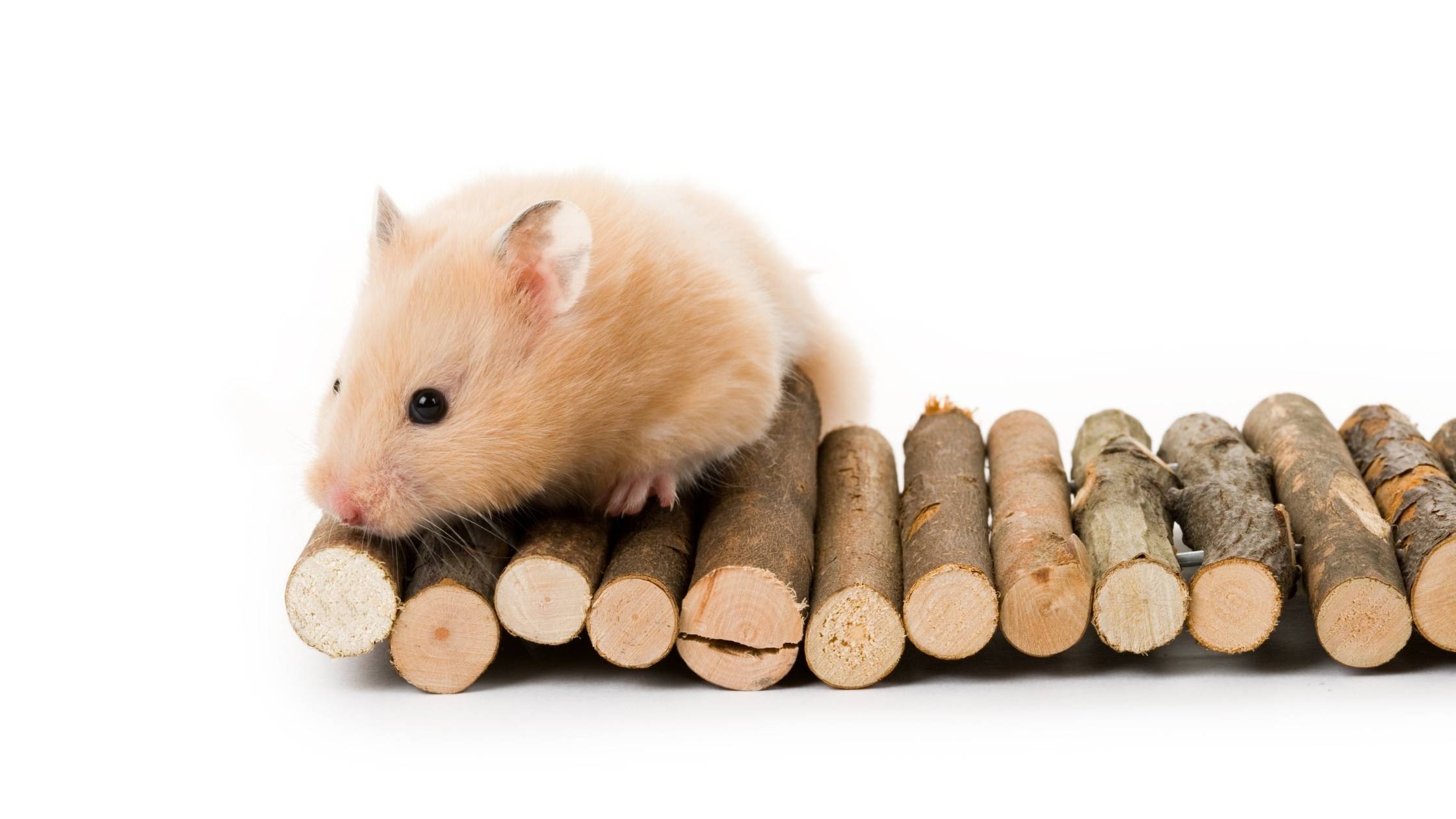Last Updated on 11/17/2021 by Veronica Jones
Hamsters are one of the most popular pocket pets in the US and it’s easy to see why. Not only are these palm-sized animals cute and cuddly, but they’re also easy to take care of!
However, owners still have to do their research to see if this is the right animal for their home. After all, animals require sufficient love and care, no matter how big or small—hamsters are no exception.
From lifespan to food guides, let’s discuss several things that people should know before deciding to own a teddy bear hamster—another name for Syrian or Golden hamsters.
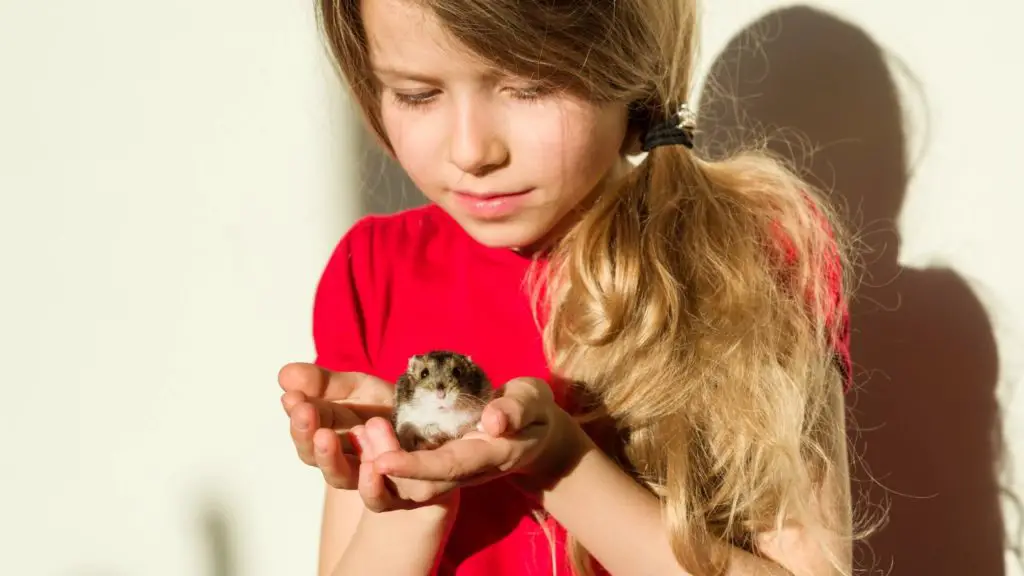
Teddy Bear Hamster Lifespan, Attributes And Characteristics
It’s essential to begin with certain facts about hamsters so that owners know just what to expect physically.
Here are some facts about teddy bear hamsters anybody should know upfront:
What is the Average Teddy Bear Hamster Lifespan?
When it comes to owning these pocket pets, owners often begin with the end in mind—just how long will this certain hamster live? It might be disappointing for some, but hamsters live shorter than most animals no matter how well taken care of.
In terms of lifespan, a teddy bear hamster only lives between two to three years. Once reaching the one and a half year mark, a hamster is already considered old and close to dying. Although, in some rare cases, hamsters live for up to five years.
How big does a teddy bear hamster get?
Sure, hamsters are generally small in size but teddy bear hamsters are considered to be on the bigger side. They can grow from four to seven inches in length during their entire lifespan. Compared to much smaller breeds—like the dwarf hamster—they’re massive.
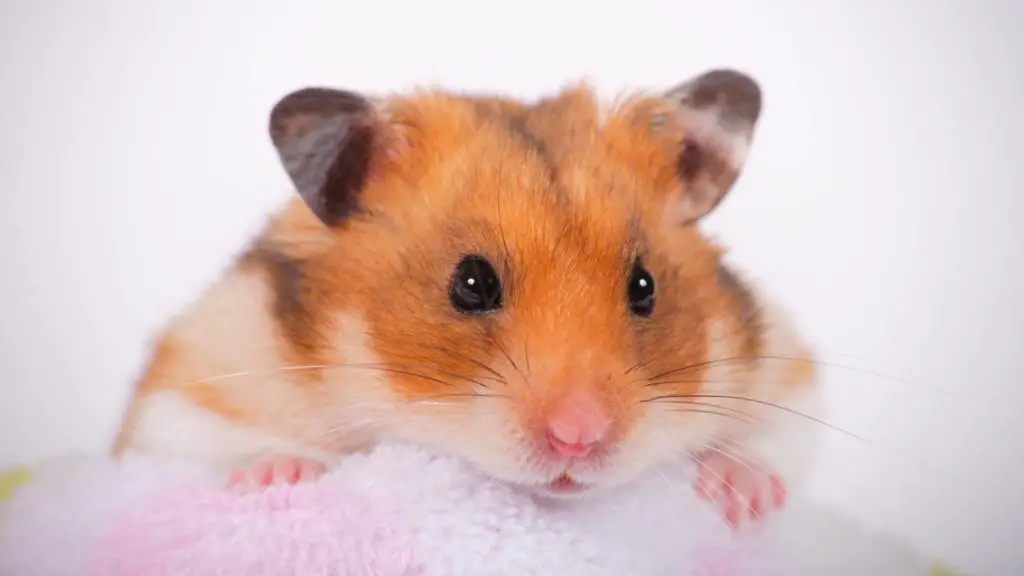
Different Teddy Bear Hamster Colors
It’s common to see color combinations on this pocket pet. Common colors that are part of these combinations are brown, black, tan, white or grey. Although, it can be a common occurrence to see one dominant color with specks of another one—so don’t be surprised.
Price of Hamsters
On average, teddy bear hamsters only cost about $20 each—which is fairly cheap. But all the costs add up once owners start to purchase cages, food and toys to keep this cute pet.
During the initial purchase, owners can spend up to $150-$250 on cages and other accessories, and another $50 on food and treats. With that said, it’s expected of owners to shell out about $50 each month for their maintenance and food.
Caring for Teddy Bear Hamsters
Now that we’ve gotten hamster facts out of the way, it’s time to highlight best practices in hamster care.
Although these hamsters only typically live up to three years, it’s no excuse not to give them the time of their lives. Caring for hamsters isn’t all that different from taking care of other domesticated pets. But these small ones do stand out with how they’re supposed to be fed and bathed.
Specific care and maintenance are necessary to make sure that they’re at their most comfortable every day. With a happy and stress-free pet, owners get to enjoy cuddles and playtime much easier.
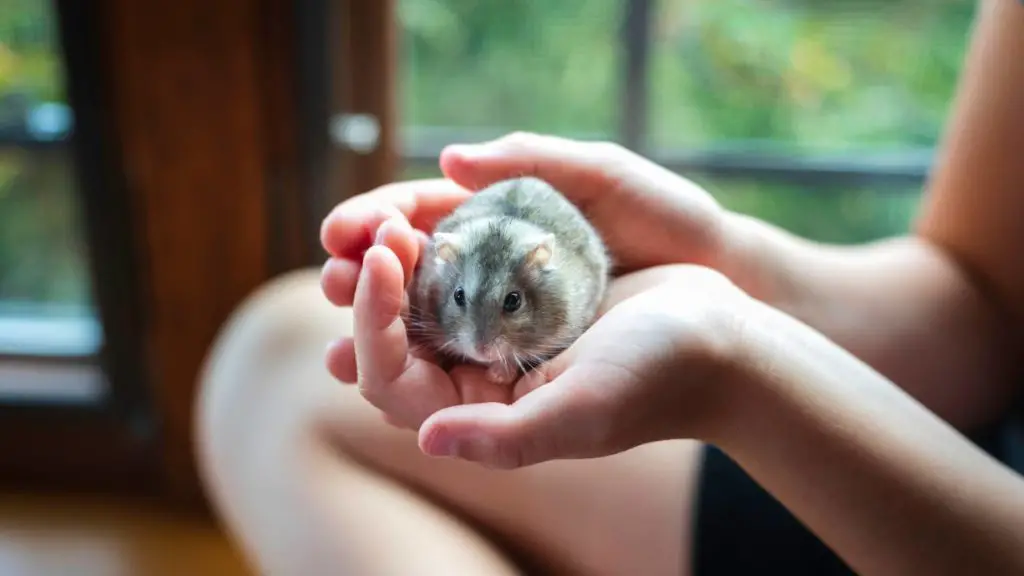
The Bathing Process
They may not look like it, but hamsters know how to keep themselves clean and healthy—this is why they’re a popular pocket pet. Should it ever become necessary, wiping them with a damp washcloth or unscented baby wipes can be a way to spot-clean these small furries.
They also won’t shy away from the occasional dust bath. Simply place a small dish filled with animal dust for them to clean and roll themselves in. This is a great way to remove moisture and oil from their furs naturally.
Housing Requirements
Several things need to be considered when choosing the right housing for hamsters, especially these big ones. First of all, the cage needs to be big enough to allow them to roam around freely and move their tiny feet.
The style of the cage comes in a close second. Most owners opt for wire cages with a plastic base or a plastic cage with plenty of compartments. However, the final choice depends on preference for cleaning.
Wire cages are often preferred because then owners only need to blast it with water and empty the plastic tray for quick cleaning. Enclosed plastic cages, on the other hand, have several compartments that often get beddings and other solids stuck in edges.
The third runner-up for top housing requirements is ventilation. Airflow is essential in cages which makes wire cages the champion in this category. Enclosed plastic cages without many holes can restrict airflow and become way too hot in the summer.
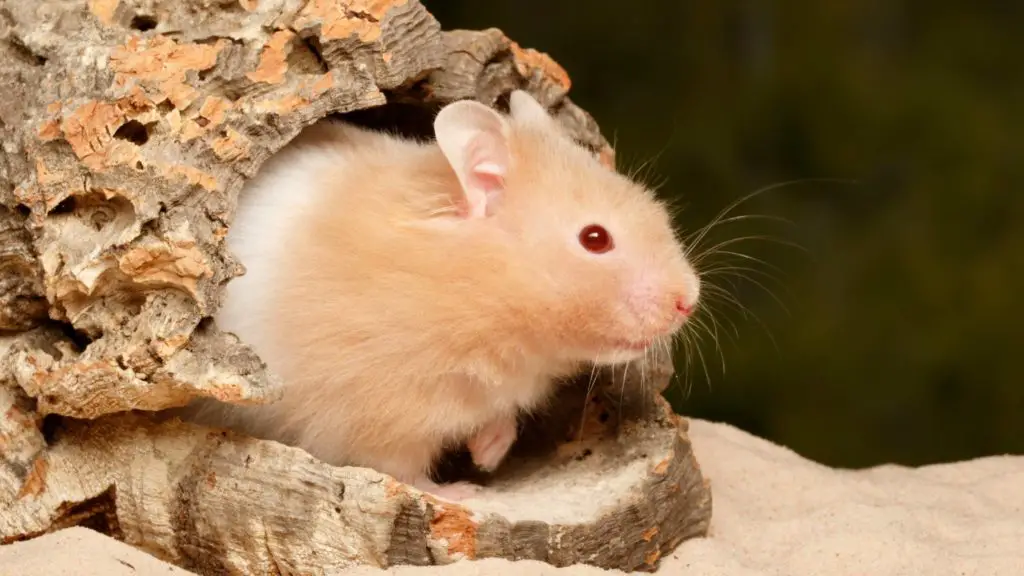
Maintaining Hamster Cages
It’s best to maintain certain routines throughout the week as it can be a way to help get this hamster settled in.
First off, make sure to wet urinated spots each day and replace them with new bedding y to avoid foul smells and a stressed hamster. While at it, also clean their food bowl and replenish their water bottle.
Every week, clean the entire cage with a 3% bleach solution and rinse completely before placing new bedding for the cage. Make sure that the cage is dried before placing the new bedding to avoid lumpy patches.
Following these two routines will help make their cage squeaky clean and less susceptible to foul smell and, in worst cases, diseases.
How Often Hamsters Should Be Fed
Regardless of hamster type, water should be available 24/7—more on hamster food in the next section. They need to get all the water they can get to maintain moisture and keep themselves cool.
In a day, hamsters should only be fed once with a serving size of one to two tablespoons. Since this type of hamster is on the bigger side, they can be fed with up to two tablespoons each day. Either choose to feed them in the morning or the evening.
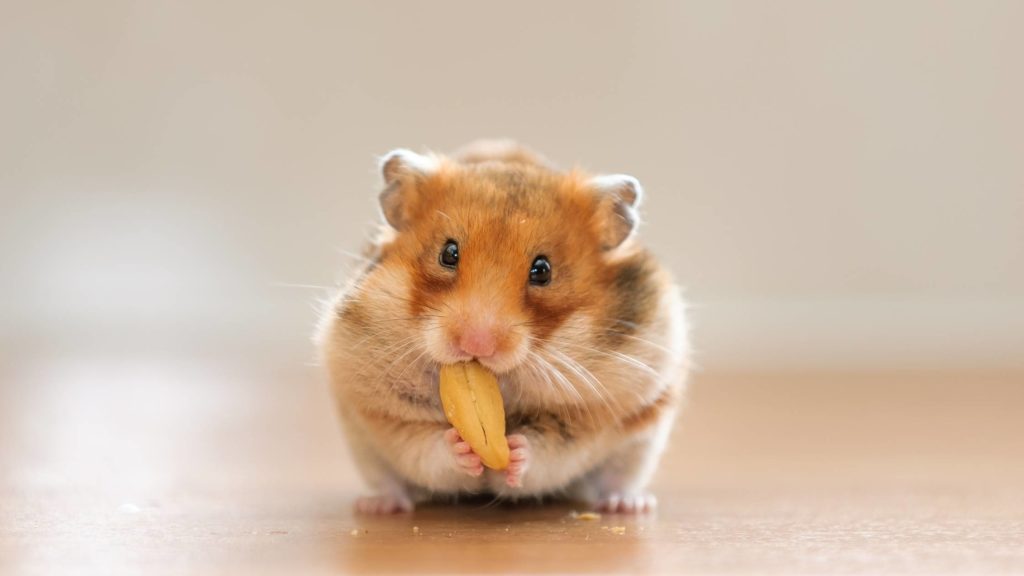
Quick Guide on Teddy Bear Hamster Food
Here comes the fun part—the food guide. It’s always a delight to see hamsters just chewing their way through life. Their small mouths make an interesting sight, especially when they chew exceptionally fast.
And what better way to make them happy than to give them the right food and the occasional treats, right?
So, to help excited owners plan for these little animals’ meals, here are the essential foods to include in their diet:
- Commercial hamster pellets – formulated with all the necessary ingredients for good health, these pellets should be served once a day with a maximum of two tablespoons.
- Timothy Hay – serving it a maximum of three times a week, Timothy Hay can be a great source of fiber and minerals that will aid in the hamster’s digestion.
- Green Veggies – celery and broccoli are two of the top veggies that hamsters love, so be sure to chop these into small pieces and serve this at most twice per week.
- Fruits – from apples to grapes, these hamsters will be delighted to munch on sweet fruits! Carefully wash and cut up into smaller pieces to avoid choking. But it’s a best practice to remove the skin, pit, and leaves of the fruits before serving them to hamsters.
- Boiled eggs – serve about a quarter to half an egg once or twice a week as a treat.
- Mealworms – whether live or dried, mealworms will be a great treat. Just ensure that you buy these from the pet shop and not take ones directly from the ground.
What Not to Feed Hamsters
It’s perfectly understandable to get excited about feeding time because these pocket pets won’t hesitate to show their hunger and eagerness to eat. However, let’s not get too excited and forget about the different foods they’re not allowed to eat.
The list isn’t really that long but it will be necessary to remember all of them to avoid anything bad from happening.
Without further ado, here’s the list of foods that should not be fed to hamsters at all costs:
- Citrus Fruits – by all means, avoid serving any sort of citrus food since these are acidic and can cause diarrhea and other stomach problems.
- Almonds – these might seem like the perfect food for munching but these contain chemicals that further break down into cyanide which is fatal for hamsters.
- Garlic and Onions – both of these contain substances that are fatal to hamsters once digested.
- Caffeine – whether coffee or dark chocolate, avoid serving anything caffeinated because it’s poisonous for these animals—no matter how small the quantity.
- High-fat foods – these include sugary foods and avocados. While they are safe in small amounts, there’s no telling when these adverse effects will be fatal to hamsters. To be safe, just avoid servings at all costs.
- Alcohol – as humans, these can be a fun treat but don’t make the mistake of pouring alcoholic beverages into their cages. This beverage disrupts a hamster’s body clock and natural patterns, according to a study.
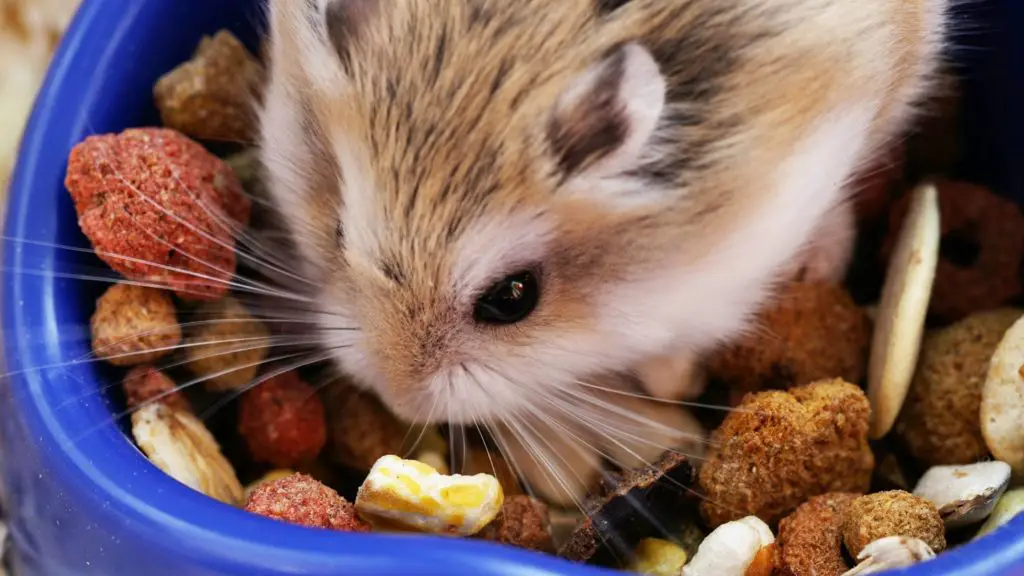
Frequently Asked Questions
Are teddy bear hamsters friendly?
This palm-sized animal is as friendly and curious as anybody can imagine. They’re more than happy to be held and caressed, especially when they’re young. Just make sure to use gentle strokes and avoid catching them off-guard for a more relaxed experience.
Do teddy bear hamsters bite?
When provoked and anxious, teddy bear hamsters tend to bite—even the hands of their owners. Sometimes, their behavior can get unpredictable which is why it’s crucial to give them utmost care and ensure they’re comfortable and stress-free.
Are teddy bear hamsters cuddly?
Of course, they are! This is perhaps one of the main reasons why owners often consider this type of every other type in the pet store. Not only are teddy bear hamsters cute, but they’re also very friendly and cuddly with their owners.
How often do hamsters breed?
Female hamsters can give birth 10 to 12 times a year, with an average number of eight to 12 hamster babies. Once they become mature enough, they go into heat every four days. Even after giving birth, they can get pregnant again after 24 hours.
What are the common illnesses of hamsters?
Some common ailments of hamsters include colds, wet tail, diarrhea, fleas and lice, constipation, lumps and bumps, and paralysis. If the hamster shows any signs of these ailments immediately bring them to the vet for further observation and diagnosis.
Do teddy bear hamsters carry diseases?
Hamsters have been found to carry certain diseases that can be harmful to humans. One of the diseases that hamsters carry is salmonella which may cause a person to develop diarrhea, abdominal cramps, and fever from eight to 72 hours after contracting it.
Another virus that hamsters may carry is Lymphocytic choriomeningitis. It may cause the typical flu-like symptoms that may be transmitted by pregnant mothers to their unborn children. For adults with a compromised immune system, this can lead to several illnesses.
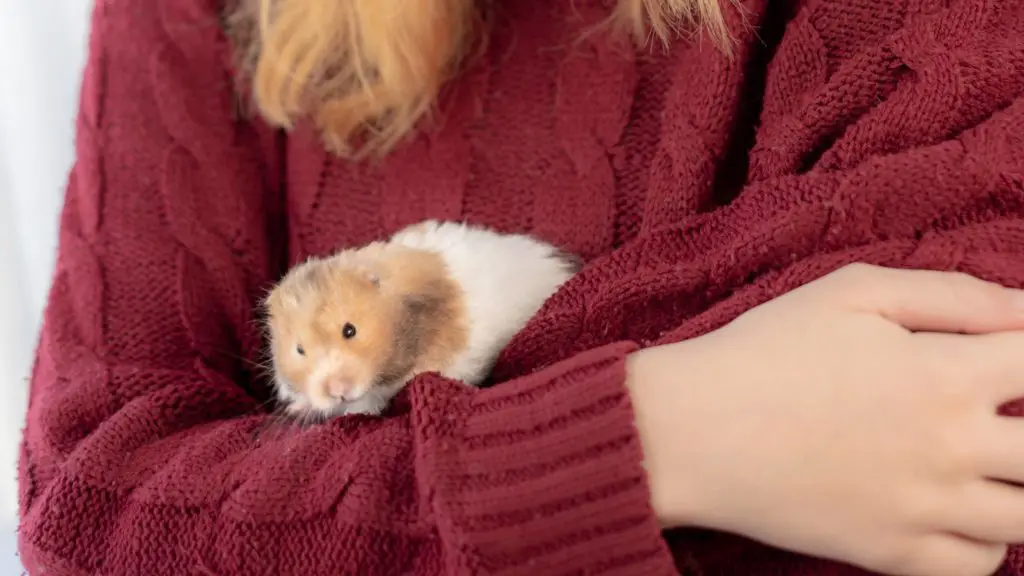
Takeaways
Before buying any pet, owners should do their fair share of research to ensure they can provide everything the pet needs to have a happy and healthy life—especially with teddy bear hamsters.
Though these little furries may be low maintenance, they still need adequate care that only educated owners know. From lifespan to the different foods they need to grow and stay healthy, this blog will be the tell-all guide for excited owners.
Searching for more information about teddy bear hamsters? Read this to know more!
Looking for More Great Articles About Hamsters?
- Can Hamsters Eat Snow Peas?
- Can Hamsters Eat Purple Cabbage? Is it Healthy for Them?
- Can Hamsters Eat Arugula? Everything You Need to Know
- Can Hamsters Eat Bananas? Are they Safe and Healthy?
References:
- PetMD “Hamster Care 101: How to Care For Your Hamster, https://www.petmd.com/exotic/care/evr_ex_hm_how-to-care-for-your-hamster” Accessed May 15, 2021
- PetMD “How Long Do Hamsters Live?, https://www.petmd.com/exotic/care/evr_ex_hm_how-long-do-hamsters-live” Accessed May 15, 2021
- Live Science “Hamster Facts: Diet, Habits & Types of Hamsters, https://www.livescience.com/27169-hamsters.html” Accessed May 15, 2021
- Britannica “Hamster, https://www.britannica.com/animal/hamster” Accessed May 15, 2021

